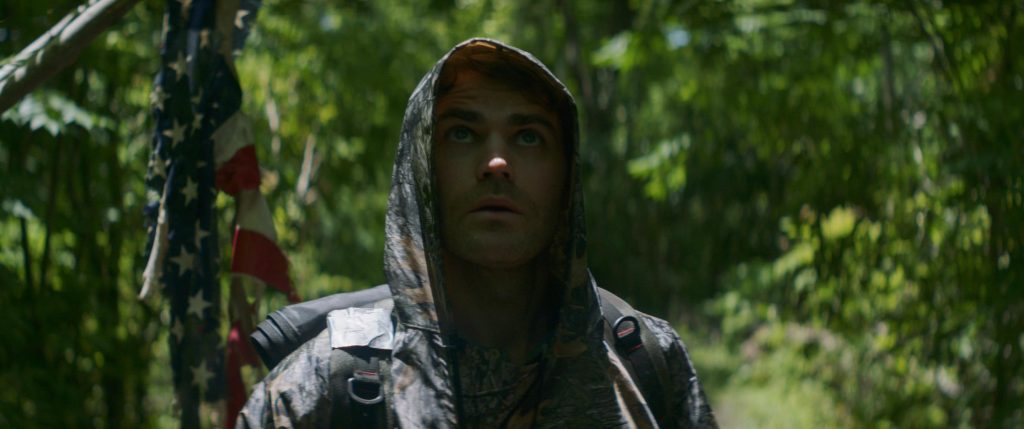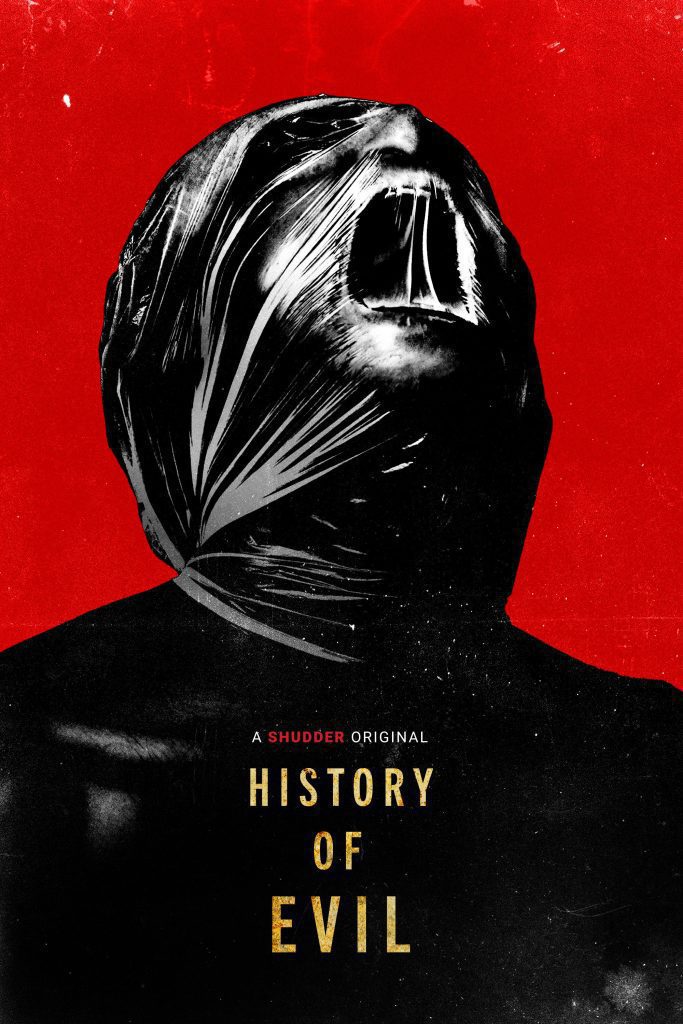In the bleak, dystopian future of Bo Mirhosseni’s “History of Evil,” the United States has devolved into the fascist North American Federation, its citizens oppressed by roaming militia forces invoking twisted patriotism in the name of God. It’s a chilling vision of society’s darkest impulses run rampant, and one that lands with particular unease given recent real-world echoes of government-sanctioned cruelty toward migrants and minorities. From its ominous opening moments transporting a child through a dehumanizing checkpoint, the film presents a realm of overt brutality masquerading as moral order.
Into this backdrop of simmering dread steps the central family unit – Alegre, a rebellious writer forced into hiding; her husband Ron, adeptly masking his true beliefs to survive; and their young daughter Daria, already bearing the scars of life under totalitarian rule. Seeking refuge from the regime’s watchful eye, they settle into a secluded colonial-era home that practically embodies Americana with its picturesque clapboard exterior. But this safe haven harbors insidious secrets of its own, its walls steeped in an evil history poised to entrap the family just as assuredly as the oppressive society they fled.
With its heady premise fusing dystopian thrills and haunted house horror, “History of Evil” takes aim at that dark intersection of systemic injustice and personal demons. Mirhosseni establishes a palpable atmosphere of menace from the outset, with the forces of societal rot and supernatural dread slowly tightening their grip on the desperate clan’s new sanctuary. If the film can maintain its uneasy tone while doing justice to both genres, it could breed the stuff of waking nightmares.

Unfortunately, for all its ambitious world-building and genre-blending premise, “History of Evil” struggles to fully capitalize on its creepy potential. The film gets bogged down in its own lofty ideas, never quite immersing the viewer fully in either the dystopian framework or the haunted house thrills it tries to meld.
In the dystopian realm, Mirhosseni paints the broad strokes of an oppressive regime taking hold through vague references to “The Resistance” and the family’s need to flee. But we’re given little concrete detail or grounded human perspective to make this nightmare society resonate viscerally. The ever-present dread of living under such fascistic rule never quite manifests beyond heavy-handed title cards and production design flourishes.
Likewise, the supernatural horror elements centered on the family’s supposed safe house fail to burrow their way fully under the skin. There’s ominous talk of the home’s dark history and the evil forces lurking within, but the frights remain largely atmospheric rather than tangible. Shadowy figures glimpsed from the corner of your eye and ominous bumps in the night create a consistent feeling of unease, but lack any true payoff of scares.
The most unsettling aspects emerge from the fraught family dynamics, as the pressures of their circumstances exacerbate pre-existing fissures. Paul Wesley’s Ron grapples with overt masculinity posturing, while Jackie Cruz’s Alegre strains to hold her fractured clan together amid escalating paranoia. In these fraught personal relationships, the true evil of the human condition emerges more palpably than any political allegory or ghostly presence.
While “History of Evil” has an intriguing premise that shows flashes of creeping dread, it ultimately fails to fully deliver on its genre-mashing ambitions. The dystopian world-building and haunted house horror influences never quite gel into a cohesive, impactful whole.
Part of the issue lies in neither aspect being fleshed out quite enough. The dystopian framework sets up an oppressive, fascistic regime, but provides little textural detail or human grounding to make this nightmare society resonate beyond broad strokes. Likewise, the supernatural horror riffs on classic haunted house tropes but lacks a truly memorable or bone-chilling haunting presence to latch onto.
Where the film finds its strongest footing is in the fraught family dynamics at its core. The escalating tensions and unraveling relationships among the desperate clan, grappling with personal demons amidst the larger societal rot, generate some of the most palpable unease. Paul Wesley, Jackie Cruz, and the young Murphee Bloom breathe authentic anguish into these roles.
Ultimately, “History of Evil” gets bogged down by its own ambition, with too many disparate elements vying for prominence instead of gelling into a cohesive, impactful vision. While first-time director Bo Mirhosseni shows flashes of skillful atmosphere-building, the film’s reach exceeds its grasp. For a true nightmare for the ages, a more focused approach might have bred more success – either doubling down on the dystopian dread or committing more fervently to delving into the depths of supernatural evil lurking within.
For horror fans craving a chilling, atmospheric descent into sociopolitical and psychological terrors, “History of Evil” offers some eerie delights amid the tonal imbalance. But its failure to fully capitalize on its juicy premise leaves you wishing the execution were just a bit more…evil.

